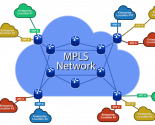
How To Detect and do foolproof Spear Phishing Prevention

What is Spear Phishing?
Phishing means a fraudulent email sent to everyone and their uncle trying to lure the receiver into giving up private data like passwords or open a spiteful document. To acquire access to your system, cybercriminals use regular phishing as a “spray and pray.” However, what is Spear Phishing?
The work of Spear Phishing is very similar to phishing. The key difference is that the fraudulent email is somehow focused on the receiver. However, in Spear Phishing, the email message specifies that the sender knows who they are reaching out to. Below we have described spear phishing prevention and detection techniques to keep you safe.
How can you detect spear phishing?
For the spear phishing prevention, it is essential to have understanding that what actually phishing is. Some tricks phishers utilize emails or another weapon to deceit receiver to open attachments or click on the link or otherwise taking action that create dangerous outcome. So Always beware of emails which contain requests to open attachments or want you to click on links, have sense of urgency, alluring human fear or greed, and demand some personal information.
Remember that emails sent from organizations do not contain any of the above mentioned features. Additionally, they never ask for your social security number, passwords, or any other sensitive information through emails.
Moreover, to prevent phishing attacks, always examine the URL of the site you are visiting. There are a lot of chances that phishers lead you to the site that seems authorized. Nevertheless, involve in stealing your social security number, passwords, or any other sensitive data.
Spear phishing attack prevention
Lets see in this section how to prevent spear phishing, for spear phishing protection against such attacks use a less vulnerable OS (such as Linux) for reading email and accessing websites. The most viruses are targeted at the Windows operating system. Moreover, firewall the computer utilized for accessing the public internet from the internal network put it in the DMZ.
And in case that needs staff to have separate personal computers side by side, do it. You can also restrict the access that the staff members have to internal networks to a need-to-know basis such as an HR department does not need access to R&D, or research staff doesn’t require access to Accounting.
Additionally, staff should have the proper training to identify at least the more in-depth assaults, or the companies can use a spear phishing prevention service mail supposedly from the organization source like HR or the CEO that reaches from a public address such as Hotmail or Gmail. Finding a zero-day utilized in a product description document sent to a purchaser may be unfeasible. Nevertheless, examining attachments at virustotal.com may be convenient for just “very new” malware.
